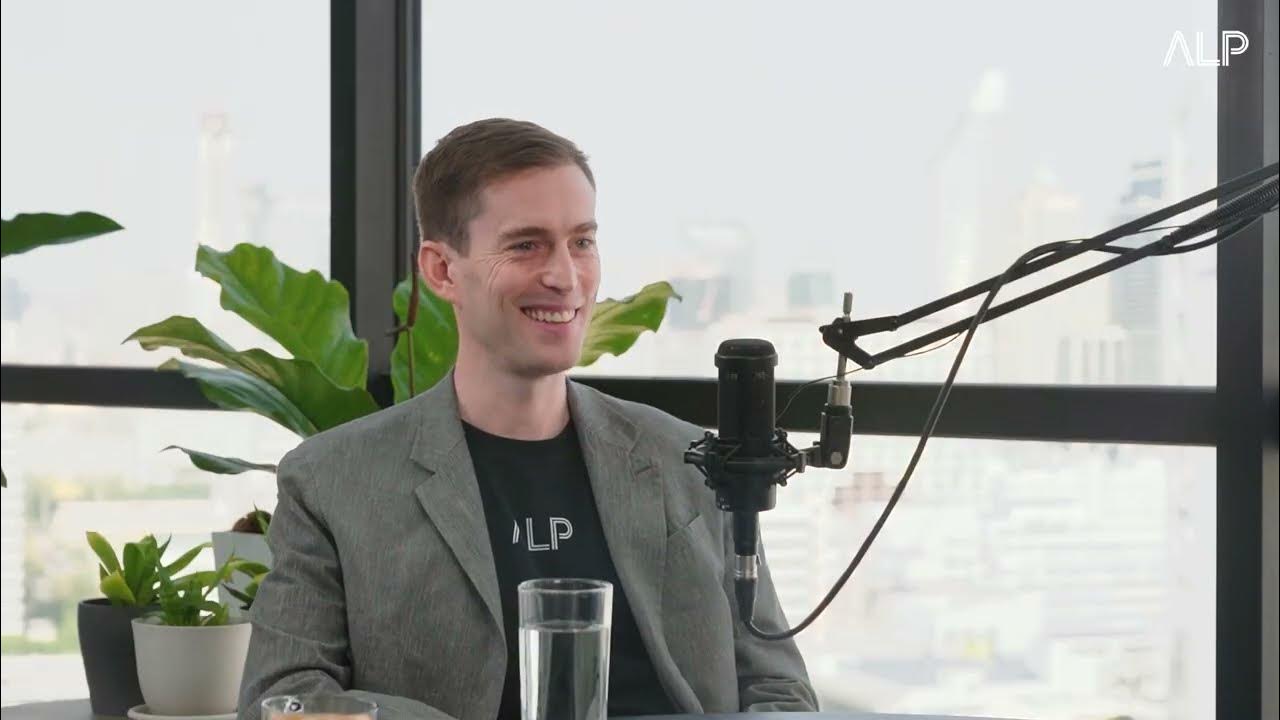Five Megatrends Influencing Supply Chain Risk And Resilience with Bindiya Vakil
Summary
TLDR在这段播客脚本中,The Chain Reaction podcast 的主持人 Tony Hein 与 Resilink 的首席执行官兼创始人 Bindia 进行了深入对话。Bindia 是供应链风险管理领域的获奖专家,曾在 MIT 获得供应链管理硕士学位,并拥有金融 MBA 学位。她分享了自己在高科技行业供应链管理、采购和采购方面的经验,以及如何将供应链风险管理带入主流。Bindia 强调了数据在提高供应链韧性中的作用,而不是依赖昂贵的缓解策略,如库存持有或工厂回岸。她讨论了人工智能如何改变供应链,通过自然语言处理和大型语言模型快速处理数据,从而在几分钟内得到答案和行动方案。此外,Bindia 还探讨了五大宏观趋势对供应链的影响,包括地缘政治、气候变化、网络攻击、ESG(环境、社会和治理)以及劳动力危机。她鼓励人们采用新技术,并强调供应链领导者应被视为收入创造者而不仅仅是成本中心。最后,Bindia 鼓励对供应链感兴趣的人,尤其是女性,考虑这一职业道路,因为它提供了一个充满挑战和机遇的全球视角。
Takeaways
- 🎓 教育背景:Bindia拥有麻省理工学院供应链管理硕士学位和金融MBA学位,这为她在供应链领域的专业知识打下了坚实的基础。
- 🏆 行业认可:Bindia被《供应链与需求链执行》杂志评为2020年度女性,这是对她在供应链风险管理领域贡献的认可。
- 🌐 全球视野:Bindia在高科技行业有着丰富的经验,曾在CISCO等公司工作,她深刻理解全球供应链的复杂性和相互依赖性。
- 📈 风险管理:Bindia强调了通过数据和分析来预测和管理供应链中断的重要性,而不是仅仅依赖库存或工厂回岸等昂贵的缓解策略。
- 🤝 合作伙伴关系:她提倡与供应商建立信任和透明的关系,通过合作和数据共享来提高整个供应链的韧性。
- 💡 数据驱动:Bindia认为,利用数据代替库存可以显著提高财务影响,并增强对任何类型中断的韧性。
- 🚀 技术应用:她讨论了人工智能如何改变供应链,通过自然语言处理和大型语言模型快速处理大量数据,并在短时间内提供解决方案。
- 🌟 创新思维:Bindia鼓励采用新技术和自动化,以开放的心态接受技术变革,而不是因恐惧而抗拒。
- 🌱 可持续性:她提到了环境、社会和治理(ESG)作为供应链管理中的一个关键趋势,特别是随着合规性要求的增加。
- 👷 劳动力挑战:Bindia指出劳动力危机是当前时代的一个重要问题,包括老龄化劳动力和供应链所需的技能劳动力短缺。
- 📚 持续学习:她认为,未来供应链专业人士需要具备的技术之一是持续学习和适应新技术的能力。
Q & A
Bindia在供应链管理领域的背景是什么?
-Bindia在高科技行业的供应链管理、采购和制造领域有着丰富的经验。她曾在像Cil和Flextronics这样的公司工作,这些公司涉及复杂的电子制造和半导体领域。此外,她在麻省理工学院获得了供应链管理硕士学位,并在财务方面拥有MBA学位。
Bindia为何决定成立Resilink公司?
-Bindia在思科公司工作期间,经历了卡特里娜飓风后的供应链映射工作,意识到许多公司在全球供应链中缺乏主动性和透明度。她认为,通过数据驱动的方法而非仅仅依赖库存或工厂回岸等昂贵的缓解策略,可以显著提高公司的财务影响和弹性。基于这些经验,她创立了Resilink,旨在帮助其他公司采用这种实践。
Resilink如何帮助企业提高供应链的弹性?
-Resilink通过提供一个平台,帮助企业映射其供应链,识别潜在的风险和中断。通过与供应商的合作、建立信任和透明度,Resilink使企业能够提前几个月预测可能的中断,并采取行动以减轻影响。
AI在供应链管理中扮演了什么角色?
-AI在供应链管理中的作用日益重要,特别是在处理自然语言和跨不同语言和地区的数据方面。AI可以快速处理大量信息,提供早期预警系统,帮助企业在几分钟内得到答案并采取行动,这在人类团队中是难以实现的。
Bindia如何看待供应链中的五大趋势?
-Bindia提到的五大趋势包括地缘政治、气候变化、网络攻击、可持续性和ESG(环境、社会和治理)问题以及劳动力危机。这些趋势正在加速发展,并在2023年变得更加显著,对全球供应链产生了深远的影响。
为什么供应链中的合作伙伴关系和多级供应商关系如此重要?
-合作伙伴关系和多级供应商关系对于建立供应链的弹性至关重要。它们可以帮助企业更深入地了解供应链的每个环节,建立长期的信任关系,并找到双赢的解决方案。这种深度合作有助于企业在危机发生时快速响应,减少中断的影响。
Bindia认为未来供应链领域的人们需要哪些技能?
-Bindia认为未来供应链领域的人们需要更加开放地接受和使用技术、自动化和人工智能。此外,他们需要具备判断力,能够在复杂的供应链管理中找到平衡点,并且拥有从多种不同情况中汲取经验的智慧。
为什么供应链领导者应该在公司决策中占有一席之地?
-供应链领导者应该参与公司决策,因为他们在确保公司能够满足季度目标、管理风险以及推动收入增长方面发挥着关键作用。他们需要被视为收入促进者而不仅仅是成本中心,他们的工作对于整个公司的运营至关重要。
Bindia对于想要进入供应链领域的人有什么建议?
-Bindia鼓励人们考虑供应链作为职业道路,因为它是一个充满激情和挑战的领域,可以让人们接触到全球视野,与世界各地的团队合作,并在日复一日的运营中发挥作用。
供应链中的可见性仅仅是开始吗?
-是的,可见性是供应链管理的第一步,但更重要的是如何使用这些数据。企业需要将数据整合到实际的工作流程中,以便在事件发生时能够迅速得到通知,准确评估对供应链的潜在影响,并与各级供应商直接联系以解决问题。
Resilink如何帮助企业应对供应链中的危机?
-Resilink通过监测和分析供应链数据,帮助企业深入了解其供应商的业务,并在危机发生时提供实时的洞察和建议。它还促进了企业与其直接和间接供应商之间的沟通和协作,以便在供应链的任何层级上都能快速响应。
Outlines

This section is available to paid users only. Please upgrade to access this part.
Upgrade NowMindmap

This section is available to paid users only. Please upgrade to access this part.
Upgrade NowKeywords

This section is available to paid users only. Please upgrade to access this part.
Upgrade NowHighlights

This section is available to paid users only. Please upgrade to access this part.
Upgrade NowTranscripts

This section is available to paid users only. Please upgrade to access this part.
Upgrade NowBrowse More Related Video

直播初期那些事:一個建築設計師,怎麽就跑到鬥魚了呢?

Ilya Sutskever: Deep Learning | Lex Fridman Podcast #94

Ilya Sutskever (OpenAI Chief Scientist) - Building AGI, Alignment, Spies, Microsoft, & Enlightenment

AI and Quantum Computing: Glimpsing the Near Future

ALP Podcast Episode 1: Supply Chain & Logistics Challenges and Opportunities with Carl Hemus

AI and the Future of Cleaning Companies: Should You Be Worried?
5.0 / 5 (0 votes)
